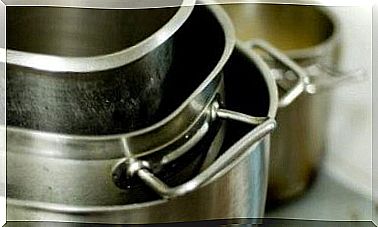What Does A Urinalysis Detect?
Urinalysis can analyze different variables. The main objective is to establish the presence or absence of certain components in the urine. This information is essential for diagnosis.

Urinalysis is a diagnostic test used to detect different types of health disorders. This test looks at the appearance, concentration, and content of your urine. The results may suggest the presence of a disease that will later be confirmed with other methods.
It is important to note that a urinalysis does not, by itself, provide a definitive diagnosis. It is the physician who interprets the implications of the results. These types of tests are done to establish the presence of a disorder, but also to prevent or monitor it.
In the urine analysis, substances that the body is not able to retain or that must be eliminated are detected. As little as 10 milliliters of urine can provide clear indications of a number of diseases such as diabetes, multiple myeloma, and kidney failure.
What is a urinalysis ordered for?
Generally speaking, the doctor orders a urinalysis for one of the following purposes :
- Evaluate the function of the kidneys: the density of the urine allows to establish if the kidneys are working properly or not.
- Detect germs: If there is a suspicion of urinary infection, urinalysis is ordered to detect the presence of germs and / or the exact type of germ that is present, through a subsequent urine culture.
- Detect the presence of some substances: there are substances that under normal conditions should not be present in the urine. If they are, they may be a sign of a health disorder.
- Assessing the impact of some diseases or drugs: the presence, or the level of some components, makes it possible to establish whether a disease has improved or worsened, or whether a drug has produced an undesirable side effect.

Types of urine tests
There are different types of urinalysis, depending on the procedure used to perform it and the objective that is intended with it. The usual tests are as follows:
- Urinoscopy: is the analysis of the appearance of urine with the naked eye. Color, turbidity, and odor provide important but inconclusive data.
- Test strip : consists of putting a small amount of urine on a special strip that has some chemical components. These react to the presence of some substances in the urine and the strip changes color.
- Urine sediment: it is carried out in the laboratory and consists, first, of separating the liquids from the solids present in the urine. The latter are examined under the microscope to establish if there are certain particles or cellular elements.
- Biochemical study: it is done in the laboratory and also allows to establish the presence of some substances or elements that may be indicative of a disease. It is a more exhaustive analysis carried out by biochemists with special techniques.
- Microbiological study: these is the urine culture, or uroculture, capable of establishing whether there is an infection, as well as naming the germ that causes it.
Findings in urinalysis

The usual thing is that, in principle, a general inspection of the urine is made to detect if there are abnormal features in its appearance. Normal urine is clear and low odor. Therefore, when it is cloudy or emits a very strong smell, you can suspect that something is not right.
What follows is to do an initial test with a test strip. By applying a small sample of urine on them, these strips remain their usual color if the urine is normal, or change color if some substance is present that should not be there.
This instrument detects:
- Acidity or pH: if it is abnormal it suggests problems in the urinary tract or in the kidneys.
- Density: high density is a sign of dehydration.
- Protein: the high presence of protein suggests kidney problems.
- Glucose: if the urine contains glucose it can be an indication of diabetes.
- Ketone bodies: also indicative of diabetes, especially decompensations that could be serious.
- Bilirubin: its presence suggests the possibility of liver disease or liver damage.
- Blood: can be a sign of infection, kidney damage, kidney stones, kidney or bladder cancer. It is a sign that deserves to develop more complementary methods to arrive at the diagnosis.
- Nitrites or leukocyte esterase: suggest the presence of an infection.
The presence of some components in the urine implies the need for a more detailed laboratory analysis – such as urinary sediment, biochemical study or microbiological study. It will be the doctor who determines the steps to follow. It is essential that you adhere to the instructions of the professional so as not to skip any step and that you go to a consultation with urinary symptoms.









